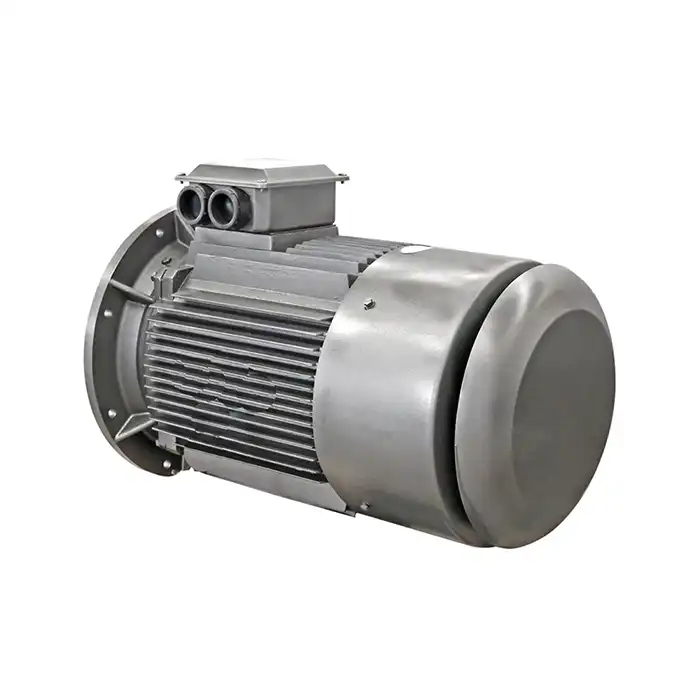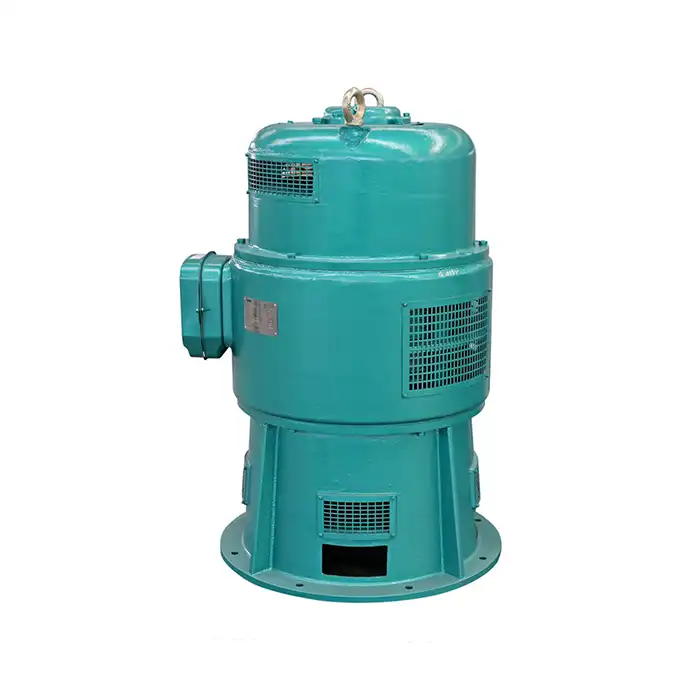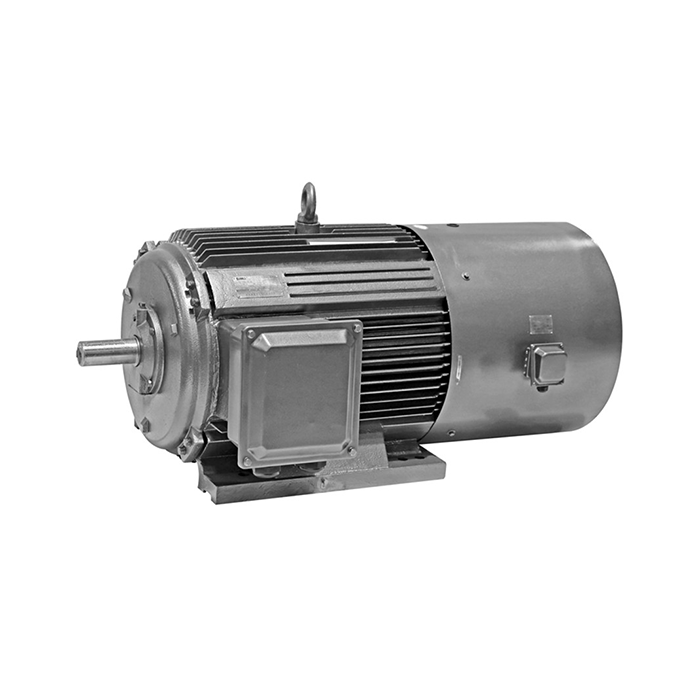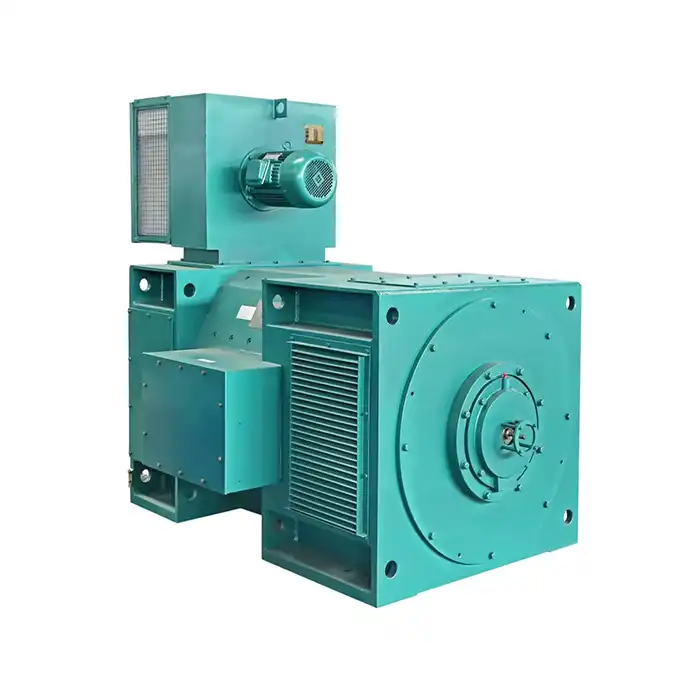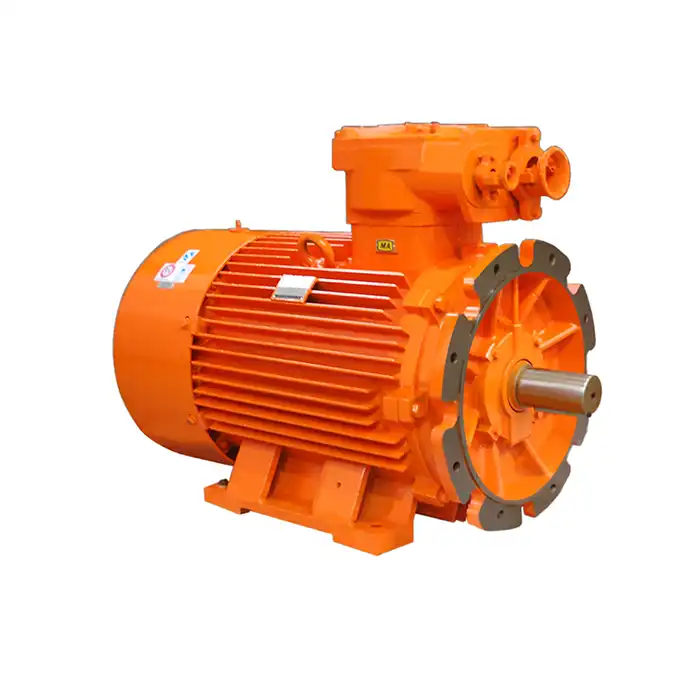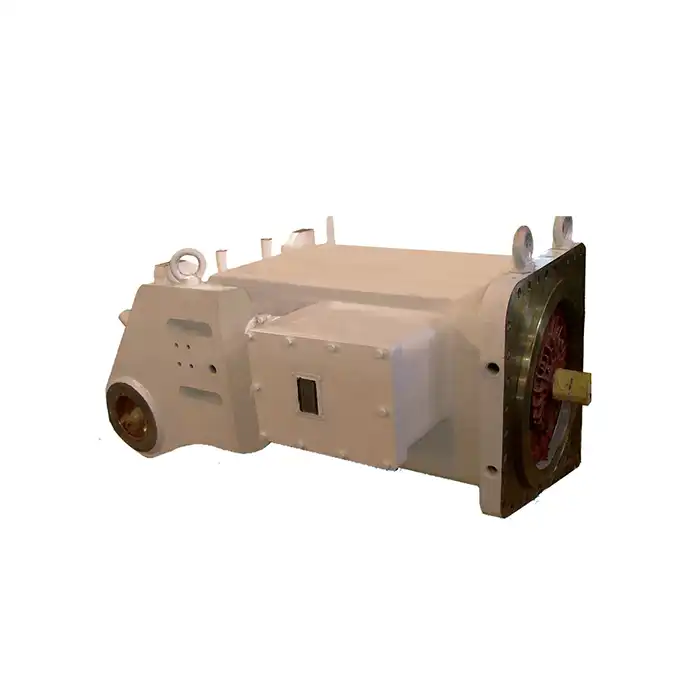5HP Motor: How do you troubleshoot a 5HP motor that won't start?
When your 5HP induction motor refuses to start, it can bring your operations to a grinding halt. Understanding the common issues and knowing how to diagnose them can save you time, money, and frustration. In this comprehensive guide, we'll walk you through the process of troubleshooting a 5HP motor that won't start, helping you identify the problem and determine when it's time to call in a professional.

Series:YE5
Frame number: 80-450
Power range:
Protection level:IP55
Energy efficiency class: IE5
Voltage range: 380V,400V,415V, 660V,etc.
Application:can be used in various fields of the national economy, such as machine tools,water pumps,fans,compressors,and can also be used in transportation, mixing, printing, agricultural machinery, food and other occasions that do not contain flammable, explosive or corrosive gases.
Certificate: international standard IEC60034-30 "Efficiency Classification of Single-speed Three-Phase Squirrel Cage Induction Motors".
Advantage:The high quality of the electric motor guarantees high operational reliability.
Others: SKF, NSK, FAG bearings can be replaced according to customer requirements.
Common causes of 5HP motor startup failure
Before diving into the troubleshooting process, it's essential to understand the typical reasons why a 5HP motor might fail to start. By familiarizing yourself with these common culprits, you'll be better equipped to diagnose and resolve the issue efficiently.
Electrical supply problems
One of the most frequent causes of motor startup failure is related to the electrical supply. This can include:
- Insufficient voltage
- Unbalanced voltage between phases
- Loose or faulty connections
- Blown fuses or tripped circuit breakers
Mechanical issues
Mechanical problems can also prevent a 5HP induction motor from starting. These may include:
- Seized bearings
- Misaligned shaft
- Damaged or worn components
- Excessive load on the motor
Control circuit malfunctions
The control circuit plays a crucial role in motor operation. Issues in this area can include:
- Faulty start/stop switches
- Damaged contactors or relays
- Incorrect wiring
- Malfunctioning overload protection devices
Motor winding problems
Internal issues with the motor windings can also lead to startup failure:
- Burnt or shorted windings
- Open circuits in the windings
- Insulation breakdown
- Moisture infiltration
Step-by-step diagnosis guide for unresponsive 5HP motors
Now that we've outlined the common causes, let's walk through a systematic approach to troubleshooting your 5HP induction motor . By following these steps, you can isolate the problem and determine the best course of action.
Visual inspection
Begin with a thorough visual examination of the motor and its surroundings:
- Check for signs of physical damage or overheating
- Look for loose connections or frayed wires
- Inspect the shaft for proper alignment
- Examine the motor housing for any cracks or damage
Power supply verification
Ensure that the motor is receiving the correct power supply:
- Use a multimeter to check the voltage at the motor terminals
- Verify that all three phases are present and balanced (for three-phase motors)
- Inspect fuses and circuit breakers for any signs of tripping or damage
- Check the continuity of power cables
Control circuit testing
Examine the control circuit components:
- Test the functionality of start/stop switches
- Check contactors and relays for proper operation
- Verify the integrity of control wiring
- Test overload protection devices
Resistance measurements
Measure the resistance of motor windings:
- Disconnect the motor from its power source
- Use an ohmmeter to measure the resistance between motor leads
- Compare the readings to the manufacturer's specifications
- Look for any significant deviations or imbalances
Insulation resistance testing
Perform an insulation resistance test:
- Use a megohmmeter to test the insulation resistance between windings and ground
- Compare the results to the minimum acceptable values
- Look for any signs of insulation breakdown or moisture infiltration
Mechanical checks
Assess the mechanical condition of the motor:
- Attempt to rotate the shaft by hand to check for seized bearings
- Listen for any unusual noises when rotating the shaft
- Check for proper lubrication of bearings and other moving parts
- Verify that the motor is not overloaded
When to call a professional: 5HP motor troubleshooting limits
While many motor issues can be diagnosed and resolved through careful troubleshooting, there are situations where professional assistance is necessary. Knowing when to call in an expert can save you time and prevent potential safety hazards.
Complex electrical problems
If you experience persistent voltage imbalances, unexplained circuit breaker tripping, signs of electrical arcing or burning, or suspect power quality problems, it's time to contact a professional. These types of issues can indicate underlying problems that, if not addressed properly, could lead to further damage or even pose a safety risk.
Internal motor damage
If internal motor damage is suspected, it's important to consult a technician with the right expertise. Indicators of such damage include burnt or shorted windings detected during resistance measurements, severe insulation breakdown identified through testing, or physical damage to the motor housing or internal components. Additionally, if the 5HP induction motor produces persistent unusual noises or vibrations, a professional assessment is necessary to avoid further wear and potential failure.
Specialized equipment requirements
Certain diagnostic procedures require the use of specialized equipment and techniques. Advanced vibration analysis, thermographic imaging, motor current signature analysis, and dynamic testing under load conditions are all methods used by professionals to accurately diagnose motor problems. These tools provide insights that are beyond the capability of standard troubleshooting methods and are crucial for a thorough assessment.
Safety concerns
If you encounter any safety risks during troubleshooting, you should stop immediately and call in an expert. This includes exposed live electrical components, signs of overheating or smoke, unstable or improperly mounted motors, or hazardous environmental conditions such as flammable substances or high humidity. Prioritizing safety is crucial to prevent accidents or further damage.
Time constraints
Sometimes, it's more practical to bring in a professional when you're under time pressure. If the motor is critical to your operations and downtime could result in significant costs, professional assistance can minimize the duration of disruption. Additionally, if you've already exhausted your troubleshooting options without success, or if the problem is intermittent and difficult to diagnose, an expert's timely intervention can resolve the issue more efficiently. If you lack the necessary tools or expertise to proceed safely, relying on a professional is often the best course of action.
Call to Action: Choose XCMOTOR for Reliable 5HP Motor Solutions
When it comes to 5HP induction motor reliability and performance, XCMOTOR stands out as a trusted 5HP induction motor manufacturer. Our motors are engineered to deliver consistent power and efficiency, minimizing downtime and maintenance needs. With our extensive experience and commitment to quality, we provide motors that meet the demanding requirements of various industrial applications. Don't let motor issues disrupt your operations. Contact XCMOTOR today at xcmotors@163.com for expert guidance and solutions tailored to your specific needs. Let us help you keep your operations running smoothly with our dependable 5HP motors.
References
- Johnson, R. (2020). Troubleshooting Techniques for Industrial Motors. Industrial Maintenance Journal, 45(3), 78-92.
- Smith, A. & Brown, T. (2019). Common Causes of Motor Failure in 5HP Systems. Electrical Engineering Review, 32(2), 112-125.
- Lee, S. (2021). Diagnostic Procedures for Induction Motor Faults. IEEE Transactions on Industrial Electronics, 68(7), 6234-6245.
- Williams, P. (2018). Safety Considerations in Motor Maintenance and Repair. Occupational Safety and Health Magazine, 56(4), 34-41.
- Chen, H. & Garcia, M. (2022). Advanced Motor Testing Techniques for Improved Reliability. Journal of Power Electronics, 22(3), 789-801.
- Thompson, K. (2020). When to Seek Professional Help in Motor Troubleshooting. Plant Engineering, 74(5), 67-73.




